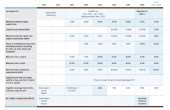
Source: JPMorgan investor Services white paper, Leveraging the Leverage Ratio, Appendix
Almost a year ago now, the U.S. banking agencies issued a final rule implementing one important chunk of Basel III, the Liquidity Coverage Ratio, though the agreement provides for “final adjustments” to be made in 2017, depending on experience between now and then.
Another chunk, the conservation buffer, is scheduled for phase-in starting next year and continuing into 2019.
The LCR is the first international attempt to micro-manage the liquidity buffers of lenders. It will have a great impact on banks, and through banks, upon their counter-parties, emphatically including hedge funds.
I spoke recently to Herman Weintraub, executive director and head of alternative investment practices at GFT, about the impact of Basel III in general on the hedge fund industry. He said that the hedge fund industry is feeling the bite because their prime brokers are feeling the bite. Further, wise hedge fund managers will act now, or have acted already, to ensure that they and their investor are not hurt. “Firms that cannot act strategically will find themselves pushed out of the market.”
Remembering Last Summer
Traditional prime brokerage services involve the extension of sizeable credit lines to hedge funds as well as to stockpiling of cash in brokerage accounts.
Some of the world’s major financial institutions have reacted to the approach of a new Basel by pulling back from the prime brokerage line to some degree, and by repositioning themselves therein. Goldman Sachs, more than a year ago, announced that it was firing some of its hedge fund counterparties and increasing fees on some others. A spokesman for one prominent financial analytics firm, asked about this in early August 2014, said that Goldman was engaged in “a total redefinition of what’s a good customer.”
Just a few days after Goldman Sachs’ announcement, JPMorgan entered the picture with a white paper entitled, “Leveraging the Leverage Ratio: Basel III, Leverage and the Hedge Fund Prime Broker Relationship through 2014 and Beyond.” The above table on the implementation dates for various components of the Basel III system comes from that paper’s Appendix. The paper’s bottom line was that “structural challenges to the prime brokerage financing model are, in effect, structural challenges to the hedge fund financing model.”
Weintraub concurs. But, he observes, “JP Morgan is certainly not exiting the prime brokerage business.” In May of this year that bank pulled the plug on its “mini-prime” platform, omnibus accounts for smaller hedge funds.
Sophistication
Unfortunately, he also said, managers aren’t as sophisticated about the general renegotiation of their position vis-à-vis the brokerages as they ought to be. “What we’re seeing is that hedge funds have simplistic rubrics.”
In essence there are three pieces to the Basel III system: capital requirements; the liquidity coverage ratio (LCR); and a new view of internalization. Capital requirements have gotten the most attention thus far (from yours truly as well as from other observers) in part because the story line is straightforward. Minimum tier 1 capital has gone from 4.5% to 6%. This increase of the capital buffer, along with the over-all climate of very low fixed-interest yields, means bad news for the return on equity for the banks., and that means that banks will naturally re-allocate their balance sheets, pulling assets out of low-return businesses, including hedge funds.
The LCR change is in a somewhat different direction, in that the banks’ need to keep above a certain threshold as to the liquidity of their balance sheets will incline them to favor some hedge funds over others as counterparties for their PB operations.
Finally, there is a new attitude in Basel toward the use of the assets of one client to cover the shorts of another, that is, internalization. This manifests itself through the LCR. That is, assets used in that way can only count at half their value for LCR purposes.
For hedge funds, though, the significance of the rules changes can’t be understood by looking at the pieces separately. They combine into a whole to make interactions with the PB industry trickier. And that trickiness is now is going to remain, quite normal. Weintraub’s advice in four words: get used to it.



